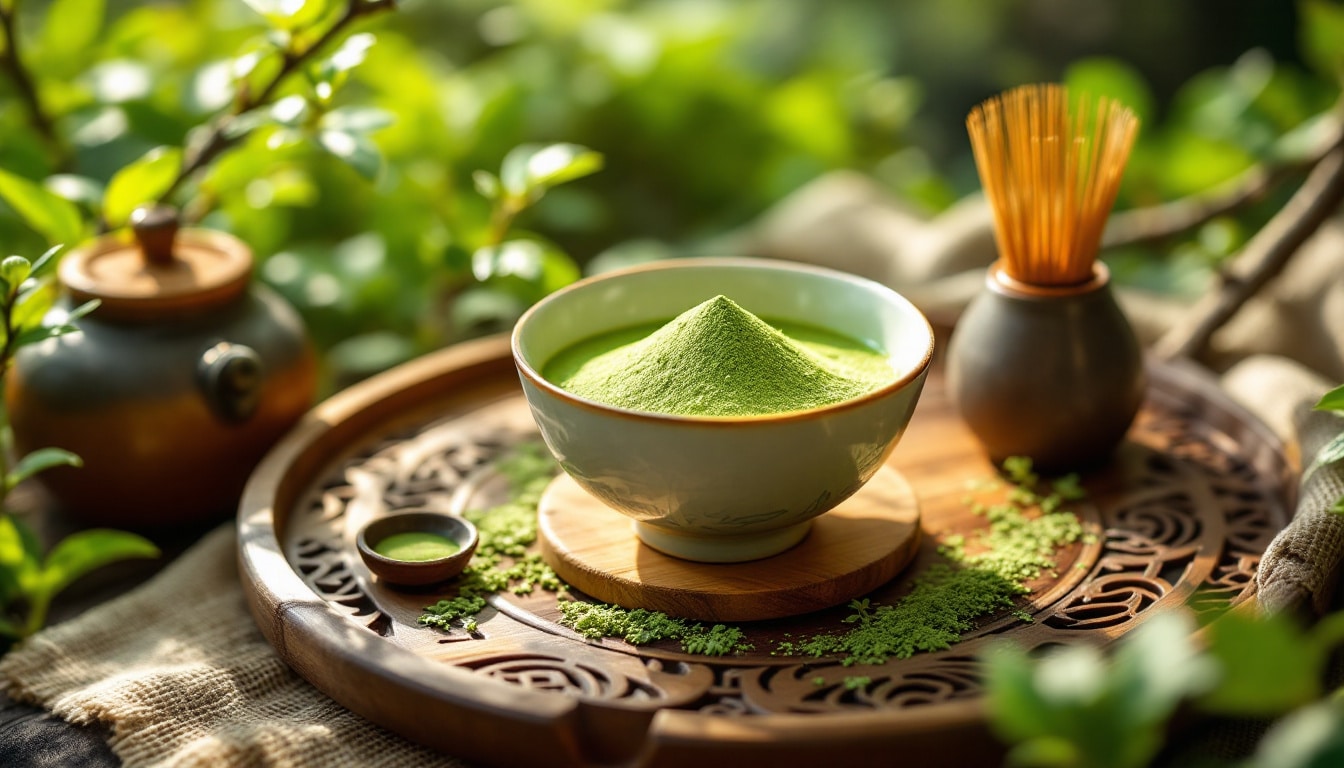Matcha, with its vibrant green hue and smooth taste, has rapidly gained popularity beyond mere aesthetics. This concentrated powder, made from green tea leaves, offers an array of fascinating health benefits that are sparking curiosity among wellness enthusiasts everywhere. Often hailed as a superfood, matcha is steeped in tradition and rich in nutrients, inviting us to explore not only its delightful flavor but also its potential to enhance our overall health.
Unlike regular green tea, matcha is unique due to its cultivation process, which involves shading the tea plants before harvest. This results in a higher concentration of antioxidants, amino acids, and other phytochemicals that can support wellness. From promoting heart health to enhancing cognitive function, the claims surrounding matcha are numerous and compelling. However, mere anecdotal evidence is not enough—we delve into the science behind these assertions to uncover what makes matcha a worthy addition to our daily routines.
Join us on this journey as we unravel the mysteries of this ancient beverage, providing you with insights into how matcha goes beyond just a trendy drink to become a powerful ally for health and vitality.

In recent years, matcha has surged in popularity, captivating health enthusiasts and trendsetters alike. This vibrant green powder, made from the leaves of the Camellia sinensis plant, has transcended its role as merely a beverage to become a cultural phenomenon. Yet, the question remains: what are the real health benefits that matcha offers?
Table of Contents
ToggleThe Nutritional Powerhouse: A Closer Look at Matcha
One reason matcha stands out among others is its unique cultivation process. Unlike traditional green tea, which is steeped and discarded after brewing, matcha powder allows you to consume the whole leaf. When grown in the shade, the leaves produce a higher concentration of amino acids, chlorophyll, and other valuable phytochemicals. This cultivation method boosts levels of antioxidants, specifically catechins, which are linked to various health benefits.
Recent studies highlight that the key antioxidant in matcha, EGCG (epigallocatechin gallate), may help in reducing inflammation and lowering cholesterol levels. A meta-analysis published in the European Journal of Nutrition found that regular consumption of catechins can effectively lower blood pressure—making a strong case for the role of matcha in heart health.
In terms of caffeine content, matcha has a unique profile. An 8-ounce cup of matcha can provide between 38 mg to 89 mg of caffeine, depending on the quality and preparation, which is significantly higher than regular green tea but less than that found in coffee. This steadier source of energy is attributed in part to the presence of L-theanine, which counteracts caffeine’s stimulating effects and promotes a state of calm focus.
Health Benefits Supported by Research
Beyond boosting energy levels, studies have shown matcha may have a broader impact on health:
- Cognitive Function: Research indicates that the combination of caffeine and L-theanine has a synergistic effect. This combination improves alertness and attention while reducing mental fatigue. A clinical trial published in the journal Appetite found that participants who consumed matcha performed better on cognitive tasks, suggesting its potential as a tool for enhancing mental clarity.
- Weight Management: Matcha has also been linked to weight control. A study published in The American Journal of Clinical Nutrition reported that the catechins in green tea, including matcha, can significantly enhance metabolic rates during the short term. This effect can contribute to increased calorie burning over time, aiding in weight management.
- Heart Health: As previously mentioned, matcha’s ability to lower blood pressure has implications for cardiovascular health. LDL cholesterol, the “bad” cholesterol, has been reduced with regular consumption of matcha, further supporting heart health.
- Detoxification: The high concentration of chlorophyll in matcha serves as a detoxifier, helping the body to eliminate heavy metals and harmful substances. This natural cleansing effect is often cited as one of the reasons individuals incorporate matcha into their daily routines.
Practical Ways to Incorporate Matcha into Your Routine
With its unique flavor and versatility, matcha can be seamlessly integrated into a variety of meals and beverages. Here are practical recommendations for adding matcha to your diet:
- Matcha Latte: Whisk matcha powder into steamed milk (dairy or plant-based) to create a creamy, flavorful latte. This combination not only tastes delightful but offers a wonderful boost in energy without the jitters associated with coffee.
- Smoothies: Add a teaspoon of matcha to your morning smoothie. The earthy flavor pairs well with fruits like banana and spinach, offering a nutrient-packed breakfast option.
- Baking: Incorporate matcha into baked goods, such as cookies and brownies. This not only adds a vibrant green color but also enhances the nutritional profile of your treats.
- Salad Dressings: Mix matcha powder into homemade salad dressings for a unique twist, combining olive oil, vinegar, and spices for a healthful accompaniment.
- Popcorn Topping: For a creative snack, sprinkle matcha on air-popped popcorn seasoned with a pinch of salt. This provides a delightful flavor and increases the snack’s health benefits.
Matcha’s appeal lies not only in its health benefits but also in its ceremonial nature. Preparing matcha can be a mindful practice, allowing for moments of meditation amidst a busy day. This awareness encourages individuals to savor each sip, emphasizing the importance of being present.
In summary, though matcha is often celebrated as a trend, its roots are grounded in tradition and an array of proven health benefits. From cognitive boosting properties to weight management, matcha is indeed a remarkable addition to any wellness regimen.
For those looking for more insights into the benefits of matcha, consider resources like Harvard Health and various articles exploring matcha’s potential impacts on diverse aspects of health. Whether you are investigating the antioxidant properties or simply curious about different ways to enjoy matcha, this vibrant green powder is here to stay—providing remarkable benefits that go well beyond what meets the eye.

Frequently Asked Questions about Matcha
Q: What is matcha? Matcha is a vibrant green, concentrated powder made from the leaves of the Camellia sinensis tea plant, commonly found in Japan and China. It is sweeter and smoother than other green teas.
Q: How does matcha differ from regular green tea? Unlike traditional green tea, matcha is grown in the shade, leading to a higher concentration of phytochemicals, antioxidants, and beneficial compounds, making it richer and more potent.
Q: Does matcha contain caffeine? Yes, matcha generally contains more caffeine than other green teas but less than coffee. An 8-ounce cup of matcha can have between 38 mg to 89 mg of caffeine.
Q: What are some health benefits associated with matcha? Matcha is rich in antioxidants and phytochemicals, which may offer various health benefits, including lowering blood pressure, reducing LDL cholesterol, improving concentration, and enhancing insulin sensitivity.
Q: Can I use matcha in recipes? Absolutely! Matcha can be whisked into hot water for tea, blended into smoothies, added to salads, cereals, yogurts, and even incorporated into baked goods for a boost of flavor and color.
Q: How should I prepare matcha for maximum benefits? Preparing matcha with hot water or incorporating it into recipes may reduce some antioxidant effects. It’s preferable to consume it in a way that preserves its beneficial properties.
Q: What makes matcha a unique beverage? Matcha is more than just a drink; it encourages mindfulness through its preparation and enjoyment, promoting a calm yet alert state of being.
Q: Is there a new variety of matcha available? Yes, there is a unique twist called Black Matcha, made from fermented, full sun leaves, offering a deeper, richer flavor profile than traditional green matcha.





